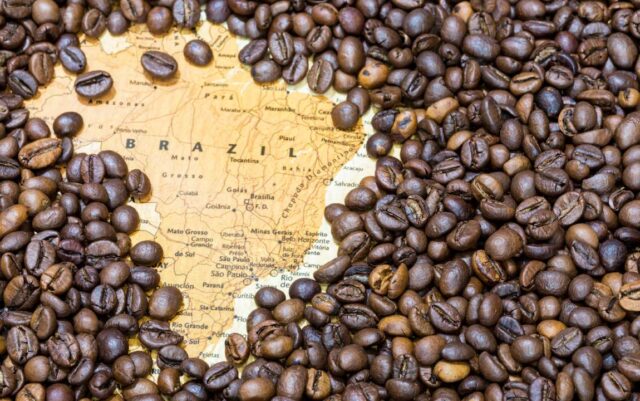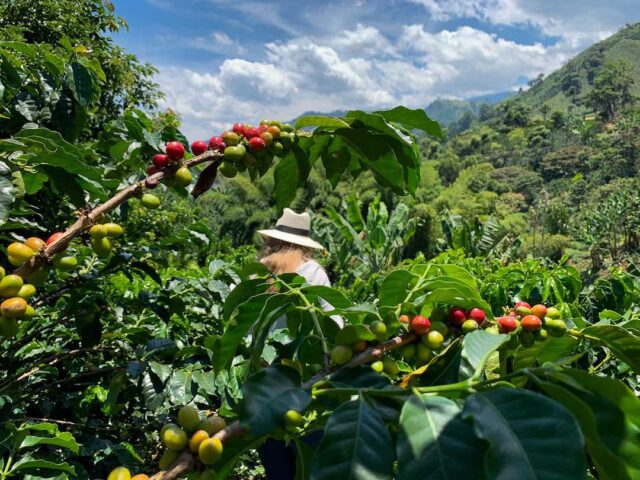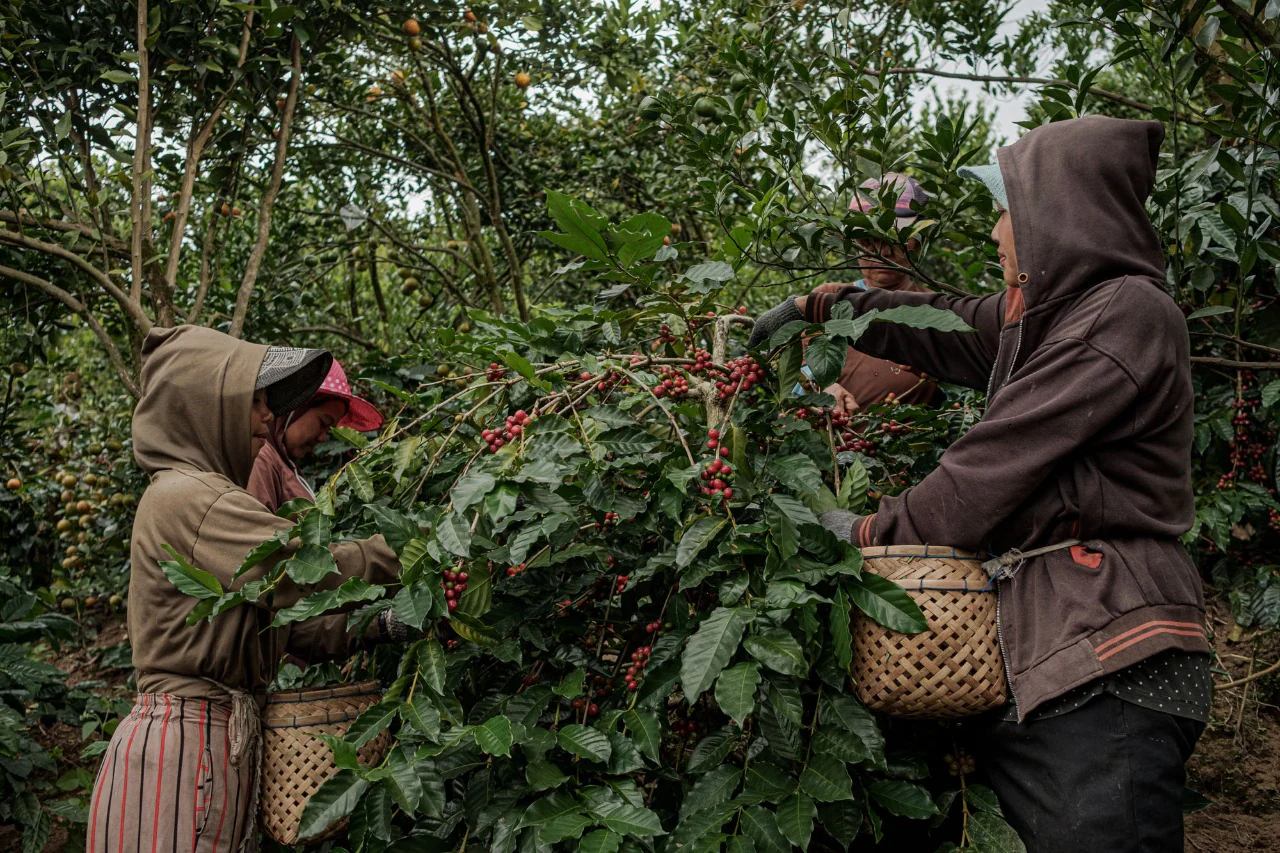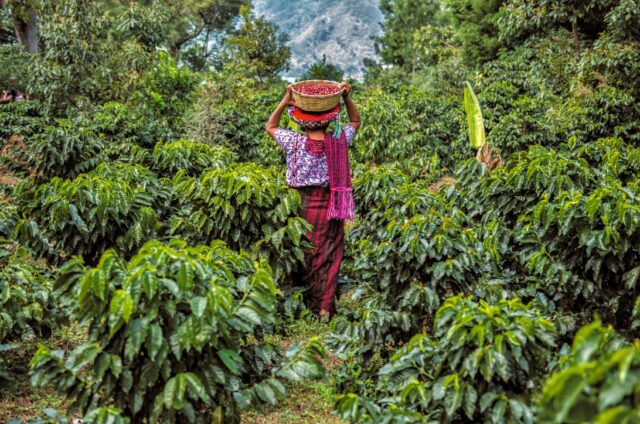
For those who embrace the art of coffee drinking, exploring the origins of your favorite beans can deepen your appreciation and enhance your daily cup. The story of coffee stretches across continents, with each region offering unique flavors influenced by the local climate and soil.
This journey through the top coffee-producing nations will not only reveal where your coffee comes from but also guide you on how to best enjoy each variety’s distinct characteristics.
1. Brazil ─ The Giant of Coffee Production
Brazil has long stood as the titan of coffee production, not just in volume but also in its influence on coffee culture globally. The nation’s vast landscape supports the growth of both Arabica and Robusta beans, each thriving in different climates within the country. Brazilian coffee is renowned for its smooth, nutty flavors with chocolatey notes, making it a staple in blends served around the globe.

To truly appreciate Brazilian coffee, try a medium roast to preserve its subtle flavor profile. Brewing methods like the French press highlight its rich, velvety body and mild bitterness. For a morning ritual, a cup of Brazilian coffee with a simple pastry can transport you to the sun-drenched farms of Minas Gerais, where much of this coffee is grown.
2. Vietnam ─ The Robusta Powerhouse
As the world’s leading producer of Robusta, Vietnam shapes much of the coffee consumed by those who favor a strong, robust cup. Vietnamese coffee is often characterized by its potent intensity and slightly bitter, earthy flavors. It’s a key component in many instant coffee blends, offering the bold kick that many seek to jump-start their day.
Enjoying Vietnamese coffee authentically involves using a ‘Phin,’ a traditional drip filter that brews a strong, concentrated shot. This coffee is typically served over ice with sweetened condensed milk, a testament to the country’s love for rich, indulgent flavors. For a summer treat, this iced coffee offers a refreshing escape from the heat, providing a bold flavor that stands up to the sweetness of the milk.
3. Colombia ─ A World of Rich Aromas
Colombia’s coffee is often hailed as among the finest globally, marked by its balanced flavor and a hint of fruitiness. The unique combo of high altitude, tropical climate, and rich soil in regions like Antioquia and Huila creates an ideal environment for growing Arabica beans. These beans are the backbone of Colombia’s coffee reputation, delivering a cup that is as rich in history as it is in taste.

When exploring Colombian coffee, consider a light roast to fully experience its range of flavors, from mild floral notes to a tangy, citrusy finish. A pour-over brew method works wonderfully to extract these delicate flavors, offering a clear, clean cup that showcases the bean’s quality.
You might be wondering, “How long do coffee beans last?” Typically, coffee beans maintain their best flavor for about a month after roasting, so enjoying them fresh is key to experiencing the full spectrum of flavors Colombian coffee offers.
4. Ethiopia ─ The Birthplace of Coffee
Ethiopia holds a legendary status in the world of coffee, often credited as the birthplace of coffee. Ethiopian coffee is celebrated for its wide array of flavors ranging from floral and citrusy to deep, berry undertones, reflecting the diversity of its landscapes and coffee-growing regions. Each region, from Yirgacheffe to Sidamo, brings a distinct taste to its beans, creating a palette of flavors that are as complex as they are captivating.
The best way to enjoy Ethiopian coffee is through a method that highlights its unique characteristics. A light roast is ideal, allowing the intricate flavors to shine, particularly the floral and fruity notes that set Ethiopian beans apart. Using a pour-over or a drip coffee maker can enhance these subtle flavors, providing a clean and aromatic experience.
For a truly immersive experience, partake in an Ethiopian coffee ceremony—an intimate, communal brewing process that involves roasting, grinding, and brewing the beans in a single session. Here, amidst the rich aromas and the slow brewing process, the culture of Ethiopian coffee comes to life.
5. Indonesia ─ Archipelago of Aromas
Indonesia offers a stark contrast in coffee profiles, ranging from the famous earthy and full-bodied Sumatra to the milder and slightly acidic Java. The Indonesian archipelago’s varying microclimates and volcanic soil contribute to these distinct flavors, making its coffee highly sought after by connoisseurs and casual drinkers alike.

For those seeking to explore Indonesian coffee, Sumatran blends are particularly noteworthy. The wet-hulling method used locally, known as “Giling Basah,” gives the beans a distinctive greenish-blue hue and contributes to their unique flavor profile. A dark roast is recommended to bring out the deep, complex chocolate and spice notes that make Sumatran coffee a favorite.
Brew it in an insulated thermal coffee mug to maintain its rich warmth and aroma throughout the morning. This brewing container not only preserves the temperature but also the integrity of the coffee’s robust profile, enhancing each sip.
6. Honduras ─ Central America’s Hidden Gem
While not as widely recognized as its Central American neighbors, Honduras has quietly risen as a top coffee producer, focusing on high-quality Arabica beans. The coffee here is often noted for its mild yet sweet flavor profile, with hints of caramel and chocolate, making it a delightful base for both espresso and filtered coffee.
Enjoying Honduran coffee is about appreciating subtlety. A medium roast brings out its best qualities without overshadowing its natural sweetness. It pairs beautifully with a gentle brewing method such as the AeroPress, which can highlight its smooth finish and sweet notes. This is a coffee best enjoyed on a quiet morning, where its soothing flavors can be fully appreciated in a serene setting.
7. Guatemala ─ A Symphony of Flavors
Guatemala is another coffee powerhouse in Central America, known for its rich volcanic soil that imparts a deep, complex flavor to its beans. Coffee from regions like Antigua and Huehuetenango is highly prized, featuring vibrant acidity and full-bodied flavors that range from sweet fruits to dark chocolate.

To capture the essence of Guatemalan coffee, opt for a medium to dark roast. This will enhance its body and bring forward the chocolatey undertones that are characteristic of this region. A drip coffee maker or an espresso machine can be used to brew a perfect cup that balances its acidity and rich flavors. Pairing it with a square of dark chocolate can accentuate its depth, making for a luxurious coffee break.
A World of Coffee Awaiting Discovery
The journey through these top coffee-producing countries offers a glimpse into the vast and varied world of coffee. Each country presents its own unique contributions to the global coffee scene, from the robust and earthy beans of Vietnam to the aromatic and intricate profiles of Ethiopia.
By understanding the origins and best practices for enjoying each type of coffee, aficionados can turn their daily coffee routine into a global tasting tour. Whether you prefer your coffee black, sweetened, or iced, there is a world of flavors waiting to be explored, each with its own story to tell. Embrace the adventure one cup at a time, and let the world’s coffees inspire your mornings.







